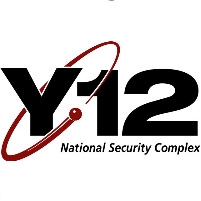Government Publishes Classified List of Nuclear Sites
Friday, June 05, 2009

Was it a serious breach of national security that could end up helping terrorists, or just no big deal? That was the range of opinion among experts following the revelation earlier this week that someone in the federal government had accidentally published a comprehensive list of nuclear sites and storage facilities on the Internet.
The discovery was first made on Monday by Steven Aftergood, director of the Federation of American Scientists’ Project on Government Secrecy, which prompted the New York Times, Associated Press and other news outlets to contact the government and ask why the list had been made available. By later that day the Government Printing Office, the agency responsible for the gaffe, removed the document from its website, but by then it had been downloaded numerous times and distributed across the Web.
Nothing in the list was considered classified information. It was labeled “highly confidential.” The report was prepared for the International Atomic Energy Agency as part of the United States’ effort to open itself up to stricter inspections, in the hope that countries like Iran suspected of secretly developing nuclear arms will reverse course and adopt policies of nonproliferation.
Reaction to the list being published was varied. Aftergood said, “Some people are painting this as a road map for terrorists, which it is not. It is simply a listing of the numerous nuclear research sites and the programs that are under way. So it poses no security threat whatsoever.”
John Deutch, former head of the CIA, said, “These screw-ups happen. It’s going further than I would have gone but doesn’t look like a serious breach.”
But David Albright, president of the Institute for Science and International Security, said the information revealing where nuclear fuels are stored “can provide thieves or terrorists inside information that can help them seize the material, which is why that kind of data is not given out.”
In the wake of the list being published, Energy Secretary Steven Chu ordered security tightened around the Oak Ridge National Laboratory in Tennessee, which houses the Y-12 National Security Complex. The heavily-guarded facility stores highly enriched uranium (HEU), used in nuclear weapons. The report included details on the specific location of HEU at Y-12.
-Noel Brinkerhoff
U.S. Accidentally Releases List of Nuclear Sites (by William J. Broad, New York Times)
'Embarrassing' Mistake Puts US Nuclear List Online (by H. Josef Hebert, Associated Press)
The List of Sites, Locations, Facilities, and Activities Declared to the International Atomic Energy Agency, May 6, 2009 (U.S. Government) (PDF)
- Top Stories
- Unusual News
- Where is the Money Going?
- Controversies
- U.S. and the World
- Appointments and Resignations
- Latest News
- Can Biden Murder Trump and Get Away With it?
- Electoral Advice for the Democratic and Republican Parties
- U.S. Ambassador to Greece: Who is George Tsunis?
- Henry Kissinger: A Pre-Obituary
- U.S. Ambassador to Belize: Who is Michelle Kwan?






Comments